A cloud of controversy continues to hover over just how much coal dust is being inhaled by the people of the Hunter Valley of New South Wales every time a coal train rumbles past their doors. And it’s unlikely the dust will settle on this debate anytime soon, writes TR Mackay
Coal dust is a well-known carcinogen and depending on who you talk to and which report you’re currently reading, levels of this airborne health threat increase anywhere from 10 per cent to 1200 per cent when the coal wagons rattle through the towns of the Hunter. This seems like a surprisingly large disparity until you deep deeper and realise each side is measuring different things.
Community concern is high and divisions run deep in a media-fuelled debate that pits the Little Aussie Battler against the might of Big Coal. Independent reports and ‘the latest findings from scientific research’ are being flung at the media thick and fast from both sides of the fence. Community activists say they have data that shows covering coal wagons greatly reduces harmful particle emissions; mining industry groups, on the other hand, say they have research that shows that it doesn’t.
Community activists want the wagons covered to address their concerns about health while Industry is looking for cheaper solutions to address their concerns about cost. Caught in the middle are some very confused people, including local miners worried about the health of their families as well as the future economic viability of the mines that provide them with their livelihood.
“Community concern is high and divisions run deep in a media-fuelled debate that pits the Little Aussie Battler against the might of Big Coal.”
So let’s look at what’s driving the debate:
Latest report from the EPA
In February 2014 the NSW Environment Protection Authority (EPA) released Professor Louise Ryan’s findings on two previous Australian Rail and Track Corporation (ARTC) reports into air quality in the Hunter Valley of NSW.
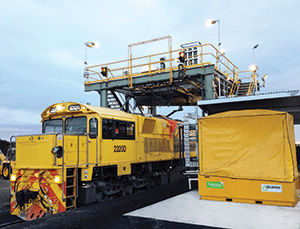
The two previous reports – one in 2012 and another in 2013 – investigated whether trains were a significant source of airborne particulate matter and whether loaded coal trains produce more particulate matter than other trains.
Professor Ryan, a Professor of Statistics with the University of Technology Sydney (UTS), was engaged by the EPA to statistically re-analyse the data from the second ARTC report after many concerns were raised about the accuracy of the original statistical analysis.
The work was undertaken in collaboration with Professor, Matthew Wand, also from UTS.
According to the NSW Minerals Council, the key findings of the Ryan report were:
- Loaded and empty coal trains and freight trains are associated with a statistically significant increase (approximately 10 per cent) in PM2.5 particulate matters compared to background levels.
- There is no evidence supporting differences between loaded or empty coal trains and freight trains with respect to associated levels of particulates.
EPA’s Chair and CEO, Barry Buffier said that Professor Ryan’s report provided more clarity around the issue of particle emissions from coal trains which were of significant concern to the community in the Hunter.
“… Professor Ryan has suggested that diesel emissions from locomotives may be a contributing factor to particle levels. We have already asked Professor Ryan to undertake some further analysis of the data to try to assess the impact of diesel locomotives.
“The primary objective for the EPA in relation to air quality in the Hunter is to ensure that it meets or is better than the national standards. As the State’s environmental regulator it is important that our decisions are based on the best evidence,” Mr Buffier said.
“While this particular report does not support the view that air quality would be significantly improved by covering coal wagons, it does provide the EPA with another useful piece of information that will add to our knowledge base of air quality in the Hunter region.”
Mr Buffier said that he recognised that dust from the rail corridor would remain an issue of concern for the community regardless of the findings of this study.
“The EPA will continue to focus its efforts on strategies to reduce all types of particle pollution and improve air quality in the Hunter and across the State.
“We have already initiated a number of important key studies and programs which address air quality in the region, including air monitoring networks in the Upper and Lower Hunter, particulate matter studies and the Dust Stop Pollution Reduction Program specifically aimed at reducing particle pollution from coal mines,” he said.
Mr Buffier said that the EPA welcomes the input of community and industry groups into air quality issues.
WHAT SAYS THE PROFESSOR?
Extract from the Summary of Re-analysis of ARTC Data on Particulate Emissions from Coal Trains by Prof Louise Ryan (25 February 2014).
“The data analysis was challenging, complicated by the large volume of data available, as well as the strong levels of serial correlation. We found clear evidence that particulate levels were elevated when trains passed by the monitoring station. Effects were strongest and of a similar magnitude (approximately 10% increase above background levels) and highly statistically significant for freight and coal trains, both loaded and empty. Effects for passenger trains were mostly statistically significant, but of a smaller magnitude. The effect for passenger trains became non-significant when we excluded times when multiple trains were passing simultaneously. There was no evidence that loaded coal trains produce more dust than empty coal trains. In fact, while differences were not statistically significant, particulate levels associated with the passing of unloaded coal trains were higher than those associated with loaded coal trains and freight trains.
The effects were apparent for all available particulate measures, including TSP, PM10, PM2.5 and PM1, especially for freight and coal trains (loaded and empty). Passenger train effects were non-significant for PM1 and only marginally significant for PM2.5. Since coal dust is likely to be reflected in the larger particle counts (TSP and PM10), this finding suggests that other contaminants such as diesel may be of more concern than coal dust. This conclusion is further supported by the fact that effect sizes were similar for freight, loaded and unloaded coal trains, all of which are pulled by diesel locomotives.”
To view or download a copy of Professor Ryan’s full report visit www.epa.nsw.gov.au/air/austrailtrackcorprpt.htm
Voice of dissent
According to John Roberston, NSW Leader of the Opposition and Member for Blacktown, the Environment Protection Authority (EPA) “misled the public about dust from coal trains and ignored internal reviews that reveal the link between uncovered coal wagons and air particle pollution in the Hunter Valley.”
According to Robertson, documents released under Freedom of Information reveal that the EPA falsely claimed that there were not elevated levels of air pollution from coal train wagons, and covered up crucial facts concerning coal dust pollution in the Hunter Valley rail corridor.
A statement released by the Robertson camp said. “The NSW Government’s subsequent technical reviews of the company’s reports on this monitoring highlighted significant spikes in pollution as coal trains passed, and flaws in the methodology and data analysis. Yet the Chair of the EPA, Barry Buffier, and Environment Minister Robyn Parker made statements to the contrary, in public and to the parliament.”
Robertson presented a number of incidents to Parliament to back up his claims of mis-information including:
- Environment Minister Robyn Parker told the Parliament on 2 April 2013, “…the first study did not identify elevated levels of coal dust”. Yet a technical review of the study conducted by the Office of Environment & Heritage science section in March 2013 found “a very strong relationship between train passage and a spike in air particles”.
- The technical review found that “there are several deficiencies with the report or the study, all of which contribute to problems in accepting the report’s conclusions”. Despite this, the EPA wrote to ARTC in May 2013 advising that it “considers the overall methodology used in the monitoring program to be sound”.
- A one page review of the ARTC report by OEH Air Policy/Science contains numerous criticisms of the report’s approach and methodology, concluding: “OEH science cannot support the sentence ‘an acceptable methodology was used for the monitoring program and the results and conclusions of the report are valid’”.
- EPA’s Air Technical Advisory Services Unit review, 29 May 2013:
- “Loaded and unloaded trains were associated with a statistically significant elevation in PM concentrations when compared with the concentrations recorded when no train was passing the monitoring station.”
- “Several finding(sic) appear to be incorrect. The report states that there was no statistically significant difference in concentrations of TSP, PM10 and PM2.5 between train types. However based on the data presented in Figures 7 and 8 and Table 9 there is a statistically significant difference in TSP and PM 10 concentrations between unloaded coal trains and passenger trains.”
Smoke & mirrors, or just a load of coal dust?
During July 2013, Hunter Valley community members monitored particle pollution from coal trains in residential areas of Newcastle and the Lower Hunter. ABC’s science program Catalyst filmed the study and interviewed residents, health experts and air pollution scientists.
The study was conducted by the Dust and Health Committee of the Coal Terminal Action Group (CTAG), an alliance of 21 community groups.
Using industry-standard air quality monitoring equipment, community members monitored particle pollution levels at three residential locations beside the coal corridor as 165 trains passed by. According to the alliance, air monitoring experts were engaged to operate the monitoring equipment and analyse the data.
A total of 73 coal trains were observed during the three days of monitoring. The corresponding pollution data was analysed to generate ‘signatures’ which depict particle concentrations before, and during the trains’ pass by.
According to the report released by CTAG, all coal train signatures were associated with a significant increase in PM10 particle pollution levels:
“In the case of Signatures 1 and 5, this represents increases of 94% and 427% respectively for loaded coal trains. Signature 6 increased PM10 concentrations significantly, up to 1210%. In sum, coal trains increase PM10 levels by between 94% and 1210%. While coal trains pass, particle pollution concentrations increase up to 13 times pre-coal train levels.”
Then in September of 2013 the NSW Office of Environment and Heritage released findings from their report Upper Hunter Valley Particle Characterisation Study, aimed at ascertaining sources of PM2.5 in the region (Note: CTAG’s previous research, mentioned above, refers to PM10 readings, not PM2.5).
PM2.5 particles are 2.5 microns and smaller in diameter, and, according to NSW Minerals Council, are of higher health concern than larger PM10 particles. However according to Professor Ryan “…coal dust is likely to be reflected in the larger particle counts (TSP and PM10).”
NSW Minerals Council Chief Executive Stephen Galilee explains what the Office of Environment and Heritage’s report uncovered:
“The study shows that soil dust – including coal dust – from sources such as mining and agriculture is not a significant source of PM2.5, making up an average of 11% and 12% of PM2.5 in Muswellbrook and Singleton respectively,” Galilee said.
“The study shows that other sources are much more significant contributors of PM2.5 in the Upper Hunter region, such as woodsmoke, which makes up 62% of PM2.5 in Muswellbrook during winter months.
The study was funded by the NSW Office of Environment and Heritage and NSW Health, with CSIRO and ANSTO conducting the sample analysis and reporting.
According to the Minerals Council, the network has shown a distinct seasonal trend in PM2.5 in the region, with the colder winter months having substantially higher levels. This, the Council believes, can be attributed to the increase in the use of household fireplaces and wood heaters.
Elephant in the room: Why measure different things?
So why is the EPA measuring different types of particles to those being measured by community groups? Let’s ask, shall we?
According to Hunter Community Environment Centre spokesperson, Fee Mozeley:
“The short answer…is that coal dust is primarily found in particle sizes of PM10. The OEH (Office of Environment and Heritage) knew this so they limited their study to PM2.5 knowing that coal dust wouldn’t be the largest pollution source. PM2.5 and PM1 are usually from combustion or burning sources (smoke, diesel emissions, gases etc). PM10 is the dusts. The OEH study was not designed to look at the impacts of coal dust, this has been confirmed by the CSRIO who oversaw the project.
“Our study looked at PM1, PM2.5, PM10 and TSP (total suspended particulates) although our comments on our findings did focus on PM10 as this size relates most to coal dust. We found that coal trains produced increased levels of pollution across all particle sizes. The diesel from the locomotives was also a big source of pollution. The entrainment of PM10 and TSP was highly significant.”
According to the NSW Minerals Council:
“The Office of Environment and Heritage only tested PM2.5 because they are of greater health concerns. PM2.5 are smaller, finer particles and potentially more dangerous.They mainly come from combustion sources, such as vehicles, power stations, domestic woodheaters, bushfires etc.”
CTAG (Coal Terminal Action Group) didn’t only monitor for PM10. They monitored for PM1, PM2.5, PM10 and TSP (total suspended particulates). However, they are only indicative results as the monitoring equipment used isn’t suitable for absolute measurements.”
Cover them wagons
Under increasing pressure from community activism, in February 2014 the NSW Minerals Council announced a new research project aimed at identifying factors in the Hunter Valley coal chain that influence potential dust emissions from trains. These factors include loading and unloading practices, the shape of coal loads (which influences wind erosion), travel times and distances, coal types, and whether coal is washed before it is transported.
The Council says the project aims to identify opportunities to make changes to minimise potential dust emissions, and wind tunnel tests will also be conducted to assess the effectiveness of spraying the surface of coal loads with water or chemical veneer to reduce wind erosion.

YEARS NATIONAL PM10 AIR QUALITY STANDARDS MET AT SELECTED SITES
* Including the Newscastle, Wallsend and Beresfield EPA monitors
Source: Office of Environment and Heritage
The research will be conducted by independent expert consultants Pacific Environment and Introspec Consulting.
Stephen Galilee said, “The Hunter community deserves facts, not misinformation, when it comes to air quality in the region. These studies will allow us to make properly informed, evidence based decisions about the best ways to minimise potential dust emissions from coal trains,” said Mr Galilee.
“The mining industry has shifted from denying there’s a problem to looking seriously at management options to tackle this significant health problem.”
“The industry takes air quality issues seriously and has introduced a range of measures in cooperation with the EPA and other regulators to reduce our pollution. However there is no scientific evidence to demonstrate that covering wagons will be anything more than an ineffective measure that will increase industry costs and ultimately cost jobs.”
While supporting the new research project in principle, community groups in the Hunter expressed reservations about the scope of the research.
Hunter Community Environment Centre spokesperson Fee Mozeley said, “Firstly, the study is expected to consider veneering (spraying the surface of coal loads with water or chemicals) as one option. Reports prepared for the coal industry and government demonstrate that metal or fiberglass covers are best practice and reduce coal dust emissions by 99%,” she said. “In the world’s largest coal port, we deserve best practice, not a second rate option that will solve only part of the problem.”
“Secondly, the Minerals Council keeps drawing attention to how much fine particle (PM2.5) pollution, comes from wood heaters in the Hunter Valley. Particle pollution from coal mining is generally larger – between 2.5 and 10 microns in diameter. Coal miners should take responsibility for their pollution and stop pointing the finger at pollutants that mostly come from other sources.”
“The mining industry has shifted from denying there’s a problem to looking seriously at management options to tackle this significant health problem,” Mozeley said.
WHAT SAYS THE ANALYSTS?
The following is an extract from Environmental Evaluation of Fugitive Coal Dust Emissions from Coal Trains (Goonyella, Blackwater and Moura Coal Rail Systems, Final Report), prepared by Connell Hatch in 2008 for Queensland Rail Limited.
An analysis of introducing wagon lids to cover coal wagons in the CQCI (Central Queensland Coal Industry) has concluded that the major advantages associated with implementing this mitigation strategy would include:
- 99% reduction in coal dust emissions from the top of wagons, the major coal dust emission source
- Potential to completely seal the wagons doors
- Reduction in aerodynamic drag
- Environmentally friendly solution.
The major disadvantages associated with implementing wagons lids include:
- Large operating cost (retrofitting only)
- Modifications to all loading and unloading sites
- Ramifications of lid failure
It was acknowledged that there are many potential operational impacts and costs associated with implementing wagon lids that cannot be estimated without a thorough detailed investigation which would need to consider the operational decisions, reliability of lids, facilities at very intricate level of detail. It is therefore considered prudent not to consider wagon lids as a potential mitigation strategy without undertaking the aforementioned course of action.
This initial assessment of wagon lids has indicated that both options are not cost effective, given that both would almost eliminate coal dust emissions from the primary dust source, however without a full comprehension of the costs associated with wagon lids, this result cannot be taken at face value. Both retrofitting and designing lids showed mediocre good scores with respect to practicability, but these scores are highly dependent upon the operational impact and reliability of the lids, wither of which can be accurately estimated without a thorough investigation.
Air quality report card
According to the NSW Minerals Council, air quality in Newcastle is good and comparable to other urban areas in NSW. National annual air quality standards for PM10 have been met at the NSW Office of Environment and Heritage monitors in the Lower Hunter region for the last 10 years, except for 2009 when dust storms affected air quality across NSW.
Results from sampling & monitoring programs
Independent sampling and analysis by the Australian Nuclear Science and Technology Organisation (ANSTO) between 1998-2009 reported that automobiles (27%), secondary sources (23%), smoke (20%) and sea salt spray (16%) are the major sources of PM2.5 in the Newcastle region.
Industry and soil combined make up 14%, of which coal dust is a proportion along with industrial facilities and agriculture.
Long term monitoring at the NSW Office of Environment and Heritage Beresfield monitor, less than 400m from the rail line, shows that national air quality standards for PM10 have been met 9 of the last 10 years. The only year when standards were exceeded was 2009, when significant dust storms affected air quality across the state.
Trackside monitoring by Pacific National since December 2012, and trackside monitoring by the Australian Rail Track Corporation (ARTC) for two separate periods totalling 97 days, also indicates air quality along the rail corridor meets national air quality standards.
Upper Hunter mines conduct weather forecasting trial
In January of this year, a three month trial of a weather forecasting system to help reduce dust emissions from Upper Hunter mine sites commenced, delivering on a project idea developed with participants of the Upper Hunter Mining Dialogue.
“While mines currently use weather forecasts to some extent to plan their activities, more consistent use of weather forecasts across all Upper Hunter mine sites was agreed by Dialogue members as an opportunity to improve regional dust management,” NSW Minerals Council CEO Stephen Galilee said.
During the trial, all Uper Hunter mines will receive daily email forecasts of weather conditions for the three days ahead. The emails will highlight times when weather conditions are more likely to generate dust. This will help mines plan their operations to manage dust during those times, such as ensuring water carts are available or preparing to move operations lower in the pit.
Environmental consultants Environ analysed 12 months of historical weather and air quality data to determine the weather conditions associated with higher dust levels, including wind speed, temperature, rainfall and atmospheric stability. The analysis was used to develop ‘triggers’ of higher risk weather conditions.
Weather forecasting company Weatherzone has now been commissioned to implement the trial by integrating the triggers into a regional weather forecast model and distributing the daily email updates.
“The trial will provide an opportunity for each mine to assess how well the system works in practice and determine the best way forward to ensure a more consistent use of weather forecast information to help minimise dust emissions at mine sites in the Upper Hunter,” Galilee said.
“Air quality and meteorology are complex sciences. There are many sources of dust, weather forecasts can change, and there can be localised effects that a regional model might not pick up. This project isn’t a silver bullet but it adds to the growing arsenal of tools available to mines to manage dust,” Galilee said.
“This is just one element of the increasingly sophisticated dust management systems used by mining. It will complement the real time air quality monitoring systems in place and the ‘Dust Stop’ Pollution Reduction Programs that all mines are working on with the NSW EPA to reduce emissions from haul roads and overburden dumps,” Galilee said.
REFERENCES
Re-analysis of ARTC Data on Particulate Emissions from Coal Trains, Author: Prof Louise Ryan, Contributing Author: Prof Matthew Wand, on behalf of accessUTS Pty Ltd for NSW Environment Protection Authority (25 February 2014)
Final Report, Environmental Evaluation of Fugitive Coal Dust Emissions from Coal Trains: Goonyella, Blackwater and Moura Coal Rail Systems, Queensland Rail Limited, (31 March 2008), Reference H327578-N00-EE00.00, Revision 1
New South Wales Environmental Protection Authority (EPA)
NSW Minerals Council:
http://www.nswmining.com.au/menu/media/news/2014/february/coal-trains-and-air-quality-in-newcastle
http://www.nswmining.com.au/environment/rail-corridor-air-quality/rail-corridor-scientific-evidence
Hunter Community Environment Centre http://www.hcec.org.au/coverthewagons
Coal Train Pollution Signature Study by Associate Professor Nick Higginbotham, Dr Ben Ewald, Ms Fee Mozeley and Dr James Whelan, for the Coal Terminal Action Group Dust and Health Committee. (August 2013)


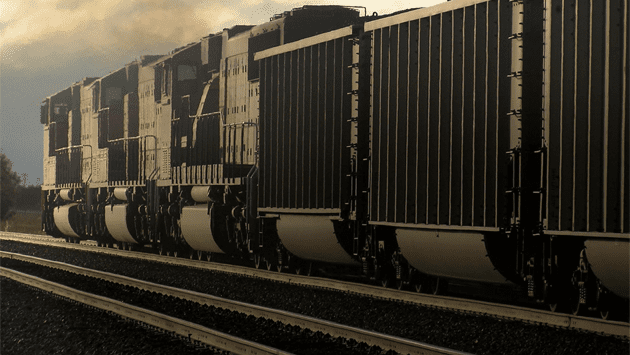
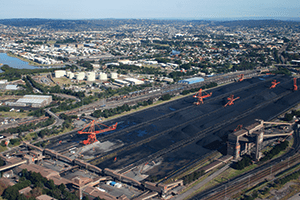
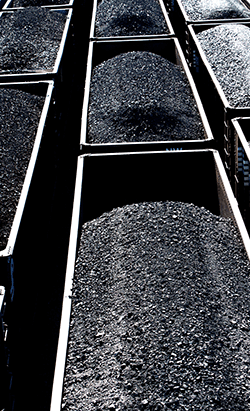
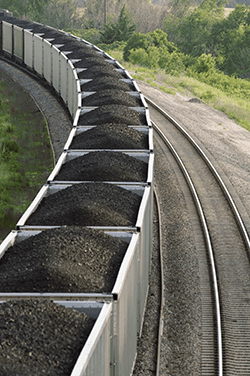

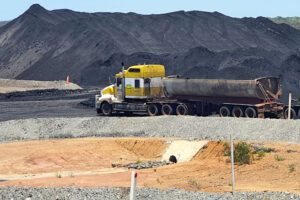
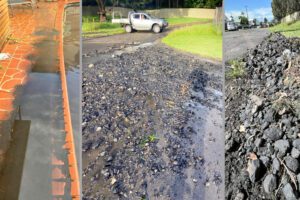








Add Comment